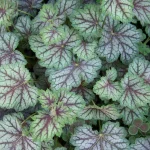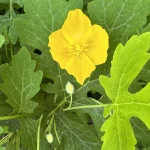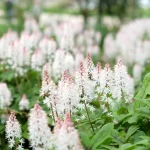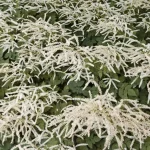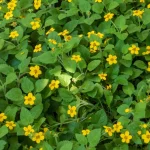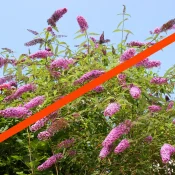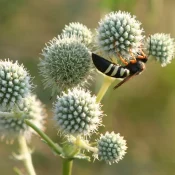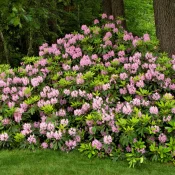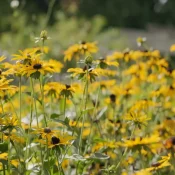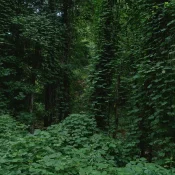There are few things more lush and soul-soothing than a stand of graceful ferns. These ancient plants, some of the absolute earliest inhabitants of North America, are also simple to grow, deer-resistant, and can add grace and interest to shady areas. Learn about the gorgeous native ferns native to North America that are easiest to grow in the garden and how to add them to your yard.
- Part Sun, Full Shade
- Height depends on species
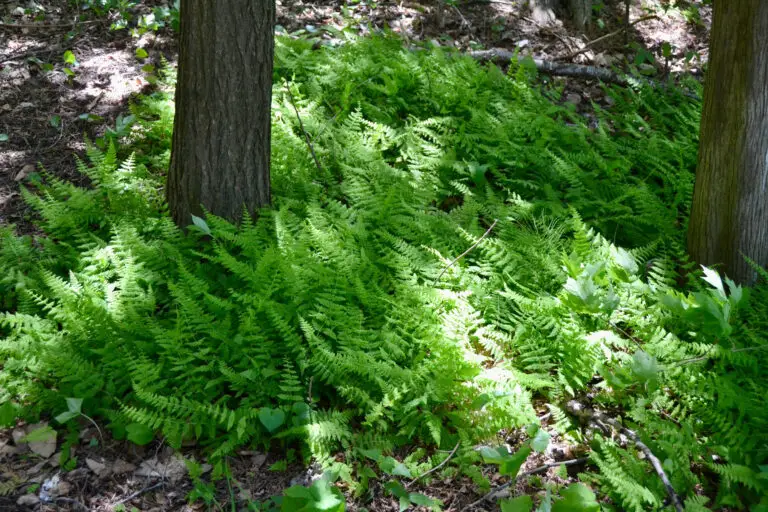
What are native U.S. ferns?
Long before front lawns, long before T-rexes, even long before every flowering plant existed(!)—there were ferns in North America. These ancient plants have been part of our world for millennia. From Maine to Alaska, from Florida to San Diego to Hawaii, there are ferns that are happy to live near you; they ask for little besides a patch of (usually shady) soil.
As stars of the shade, ferns can brighten up dark corners and add life beneath shade trees where little else can grow. They are wonderful groundcovers and stars of woodland gardens, but can also act like top-notch supporting actors in a garden—providing texture and interest, including in fall and winter.
As a bonus: Are you looking for native plants that deer don’t like? Almost all ferns are of little interest to deer.
New to native?
Before lawns and landscaping, native plants were here. They’ve fed birds, bees, and butterflies for thousands of years—and they’ll do the same in your yard. The best part? They’re easier to grow than you think.
What should I do with ferns in the garden?
Here are some ideas for where to put ferns in your garden:
- Use spreading ferns as a low-maintenance groundcover.
- Line the edges of walkways with low-growing ferns for a soft edge.
- Give a shady or side garden the lush, tropical look it deserves, with minimal work.
- Plant tall ferns to hide a compost pile or gas meter.
- Ferns make gorgeous foundation plants around the base of a house.
- Make an all-fern garden bed by layering tall, short, and different-colored ferns.
- Plant them under shade trees where little else can grow.
- Add drought-hardy ferns into a rock garden.
- Plant extra ferns so you can snip a few fronds to add to cut flower bouquets or arrangements.
- Strategically place evergreen ferns for a splash of green in winter.
- If you have a pond, ferns were made for draping the edges to make it look serene and lovely in all weather.
- Mix ferns with spring wildflowers in a shady spot.
- Plant them around a shaded patio for a relaxing retreat.
- Many ferns are hardy to surprisingly low temperatures, so they can be grown in containers.
- Use small ferns and mosses to make a fairy garden.
- If you want a real project, if your climate allows it, you can plant ferns into your trees for a true jungle feel.
What are good native ferns for the East & Midwestern U.S.?
The woodlands, meadows and bluffs of the eastern and midwestern U.S. were once lush with ferns. They can grow in the harshest northern winters but also the mild, humid climates further south.
Here are a six native ferns that are particularly useful for the garden:
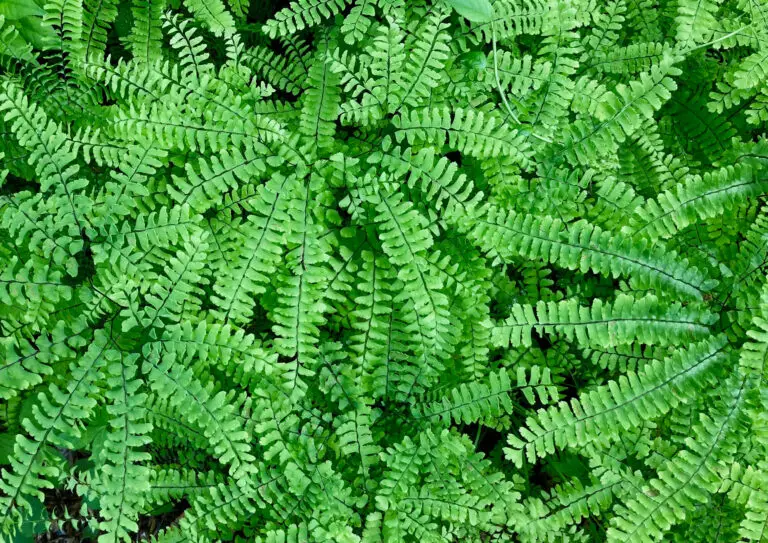
Northern Maidenhair Fern
Maidenhair ferns are some of the most charming plants out there; their fronds seem to float above the ground, held up by slender stalks. They are easy to grow in medium to moist soils, and will slowly spread if happy. (If it gets too dry, the fern may go dormant, then most likely reappear when it rains.) They are lovely lining a pond, along a path in a shaded garden, in a shaded border, or in a woodland garden.
Overview
- Latin name: Adiantum pedatum
- 1-2 feet tall
- Part sun to full shade
- Zones: 2-8
- See native range
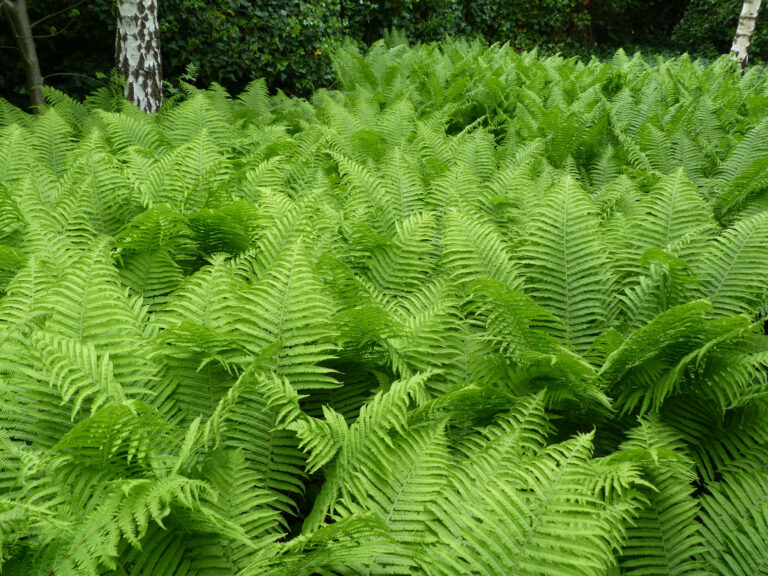
Lady Fern
With lacy fronds and an easygoing disposition, lady fern is a great fern for the garden. It likes shade and moist soil, but can tolerate drier soils than many other ferns. It will slowly spread over time and can be easily divided. Unusually among plants, it is found across three continents (North America, Europe, and Asia)!
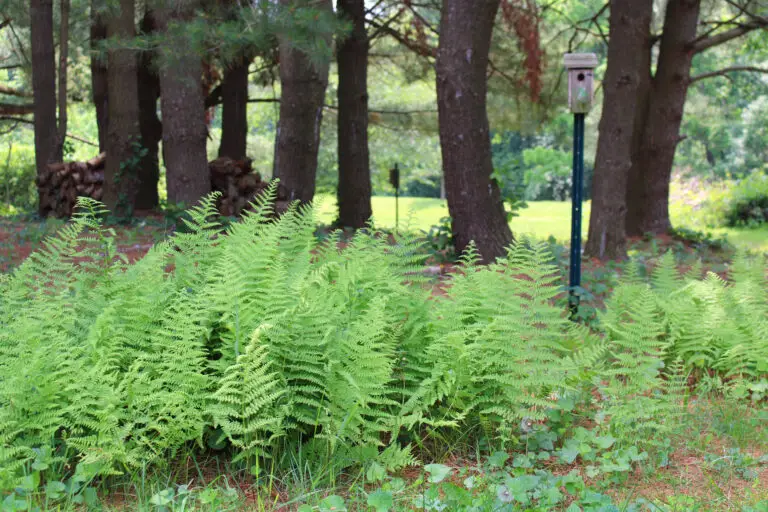
Hay-scented Fern
Hay-scented Fern is one of the few ferns described as “aggressive”—which makes it a perfect native groundcover to fill in a shaded or partly shaded area. “This is not a plant to mix with your treasured rarities or even to plant near them, but it is an elegant, weed-smothering fern in the right location,” writes William Cullina.
In shade, it can handle medium soils to even dry ones after it’s established; it can also thrive in full sun if the soil is consistently moist. It will fill in about a foot per year in ideal conditions, less if it is very dry or shady. It’s even tolerant of salt. And yes, it smells like freshly mown hay if you brush your hand through the ferns or crush a leaf.
Overview
- Latin name: Sitobolium punctilobulum or Dennstaedtia punctilobula
- 1-2 feet tall
- Part sun to shade
- Zones 3-8
- See native range
How do I find native ferns for sale?
It’s definitely not as easy as it should be to buy native plants. Some of these will show up in your local garden centers, but often not all of them. If you’re having trouble finding a source, we’ve assembled some resources to help:
Where can I find seeds and plants?
Finding native plants can be challenging (we partly blame Marie Antoinette.) To make it easier, we’ve assembled four sourcing ideas.
Native Nursery List
300+ native nurseries makes finding one a breeze
Online Native Plant Sellers
We've included 100+ online resources to help
Society Plant Sales
Every state has a native plant society; find yours
Online Communities
Local Facebook groups are a great plant source
What are good pairings for native ferns?
Native ferns like consistent moisture (in nature, you’ll find it along streams, lakes, and ponds). Pair with other natives that thrive in this environment, like Joe Pye Weed and Cardinal Flower.
Now that you’ve gotten to know a few of the more easily grown native U.S. ferns, we hope you’re inspired. Ferns are lovely, versatile, low-maintenance plants for the garden—from groundcovers to hard-to-fill spots beneath trees to stars of the shady border. Plant a few and bring a sense of lushness and tropical flair to your yard, garden, or park.
Next, find more deer-resistant native plants, or for more plants that love wet areas, check out Native plants for a rain garden. Happy planting!
Sources
- Cullina, William. Native Ferns, Moss, & Grasses: From Emerald Carpet to Amber Wave, Serene and Sensuous Plants for the Garden. Echo Point Books and Media, 2008.
- Calscape, Giant Chain Fern.
- North Carolina Extension, Polystichum munitum (California Sword Fern, Giant Holly Fern, Imbricate Sword Fern, Swordfern, Sword Fern, Western sword, Western Swordfern, Western Sword Fern)
- North Carolina Extension, Osmundastrum cinnamomeum (Cinnamon Fern)
- Native Plant Trust, Marginal fern, Dryopteris marginalis from New England Wild Flower Society
- Missouri Botanical Garden, Adiantum pedatum
- Missouri Botanical Garden, Athyrium filix-femina
- Nickel, Earl. “California Native Ferns.” Pacific Horticulture.
There are plenty of options for shade.






